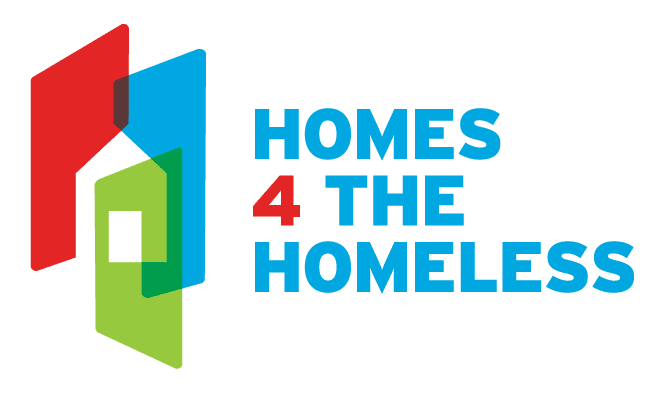The Key to Home Initiative Is Showing Early Success — Even as Federal Policy Shifts Away from Housing Solutions Toward Criminalization
Oklahoma City is piloting a new homelessness diversion program designed to help people access stable housing instead of emergency shelters.
The program, known as Key to Home Diversion and Rapid Exit program, is a joint venture between the city and Catholic Charities. It uses a Housing First approach to connect people accessing the city’s City Rescue Mission, Salvation Army, and City Care shelters with housing options instead of shelter beds, according to a report from local NPR affiliate KOSU.
The diversion pilot was launched at a time when homelessness is growing across the midwestern city and around the nation. More than 1,800 people were homeless in OKC last year, according to the 2025 Point-in-Time Count. That represents a 2.4% increase from the previous year. Nearly one-quarter of people who are homeless in OKC are unsheltered.
Nationwide, more than 771,000 people experienced homelessness in the U.S. last year. The fastest growing subpopulations of people who are homeless are senior citizens and families with children, which speaks to the impacts that America’s lack of affordable housing has on vulnerable households.
Jamie Caves, the strategy implementation manager for Key to Home, described the new diversion program to KOSU as a win-win for OKC. On one hand, people experiencing homelessness can more quickly connect with housing and services. On the other hand, the program could also save the city money, Caves said.
“Intervention is not only effective, but it’s also more cost-efficient than long-term shelter stays or unsheltered homelessness,” Caves told the local news outlet.
Key to Home Builds on Broader Housing First Efforts in OKC
Key to Home is part of a broader Housing First initiative that Oklahoma City is undertaking. The city also operates an Encampment Rehousing Initiative, which has relocated more than 450 people from the streets into housing with supportive services so far this year. The program’s goal is to serve 500 people by the end of 2025.
City data shows this model has had a notable impact on the local unhoused population. Between July 1, 2023, and December 31, 2024, more than 2,200 people received assistance from the Key to Home initiative, and 336 encampment residents received housing. Another 21 encampments were closed under the initiative, according to the data.
OKC’s Key to Home model also resembles multiple other rapid rehousing efforts across the country. Mayor David Holt recently told local news station KFOR that OKC adopted the model from Houston, Texas, which has seen a greater than 60% decline in its homeless population over the last dozen years.
Mayors from Chicago, Los Angeles, and New York have all traveled to Houston to learn how they can adapt the model to meet the needs of their homeless constituents. These cities, along with others, were able to establish these programs using $529 million in federal funding from the Department of Housing and Urban Development’s All Inside initiative during the Biden administration.
For instance, Los Angeles Mayor Karen Bass launched a program that partnered city resources with philanthropic organizations that housed more than 23,000 unhoused residents between 2022 and 2024.
Denver, Colorado, developed its House 1000 program using money from the All Inside campaign. The program provided temporary housing to more than 3,000 unhoused Denverites over two years, and helped the city close 98% of encampments of 10 or more people over that time.
Chicago used its funding to create a diversion program for people living unsheltered at transit stations. According to federal data, 59 people were diverted to shelter through the initiative.
Federal Funding Cuts Threaten Housing First Progress
Despite the successes of these Housing First programs, the Trump administration has made it clear that it will not continue funding such efforts.
The president’s first budget slashed more than $500 million from federal housing programs that utilize Housing First strategies, and subsequent executive orders have called on agencies like HUD and the Department of Health and Human Services to promote treatment-first options for addressing homelessness.
The Trump administration has also shown support for the continued criminalization of homelessness. One executive order titled “Ending Crime and Disorder on America’s Streets” calls on state and local officials to treat homelessness and a mental health and substance abuse crisis, even though decades of research shows the root cause of homelessness is a lack of affordable housing.
Experts have warned that this new regime represents a “dangerous shift” for America’s homeless service providers, which could make it more difficult to solve homelessness in the future.
“If we truly want safer, more resilient neighborhoods, we must fund housing-first systems, not just badge-first responses,” Michael Callahan, director of the Office of Homelessness Prevention in New York, posted on social media. “This approach leaves behind the very communities most at risk — while targeting the very policies designed to protect them.”
Criminalization Is Spreading, And This Order Supercharges It
Many communities have laws that criminalize activities homeless people need to do in public to survive, including:
- Sitting or lying down
- Loitering or loafing
- Eating or sharing food
- Asking for money or panhandling
- Sleeping in cars, outside, or camping
Not only is the cost of criminalizing homelessness high, but it also does nothing to solve homelessness and violates human rights. Anti-homeless legislation leads to homeless people being arrested or fined, which makes it harder to find housing and jobs and access social services.
Contact your legislators and demand that they stop supporting legislation that criminalizes homelessness. Instead, they should support policies that invest in Housing First, a proven, successful approach to solving homelessness.
